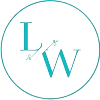The Future of Nursing: Leading Change, Advancing Health,” and explore the “Campaign for Action: State Action Coalition
Assessment Description
Review the IOM report, “The Future of Nursing: Leading Change, Advancing Health,” and explore the “Campaign for Action: State Action Coalition” website. In 1,000-1,250 words, discuss the influence the IOM report and state-based action coalitions have had on nursing practice, nursing education, and nursing workforce development, and how they continue to advance the goals for the nursing profession.
Include the following:
Describe the work of the Robert Wood Foundation Committee Initiative that led to the IOM report, “Future of Nursing: Leading Change, Advancing Health.”
Outline the four “Key Messages” that structure the IOM Report recommendations. Explain how these have transformed or influenced nursing practice, nursing education and training, nursing leadership, and nursing workforce development. Provide examples.
Discuss the role of state-based action coalitions. Explain how these coalitions help advance the goals specified in the IOM report, “Future of Nursing: Leading Change, Advancing Health.”
Research the initiatives on which your state’s action coalition is working. Summarize two initiatives spearheaded by your state’s action coalition. Discuss the ways these initiatives advance the nursing profession.
Describe barriers to advancement that currently exist in your state and explain how nursing advocates in your state overcome these barriers.
You are required to cite a minimum of three sources to complete this assignment. Sources must be published within the last 5 years, appropriate for the assignment criteria, and relevant to nursing practice.
Prepare this assignment according to the guidelines found in the APA Style Guide, located in the Student Success

